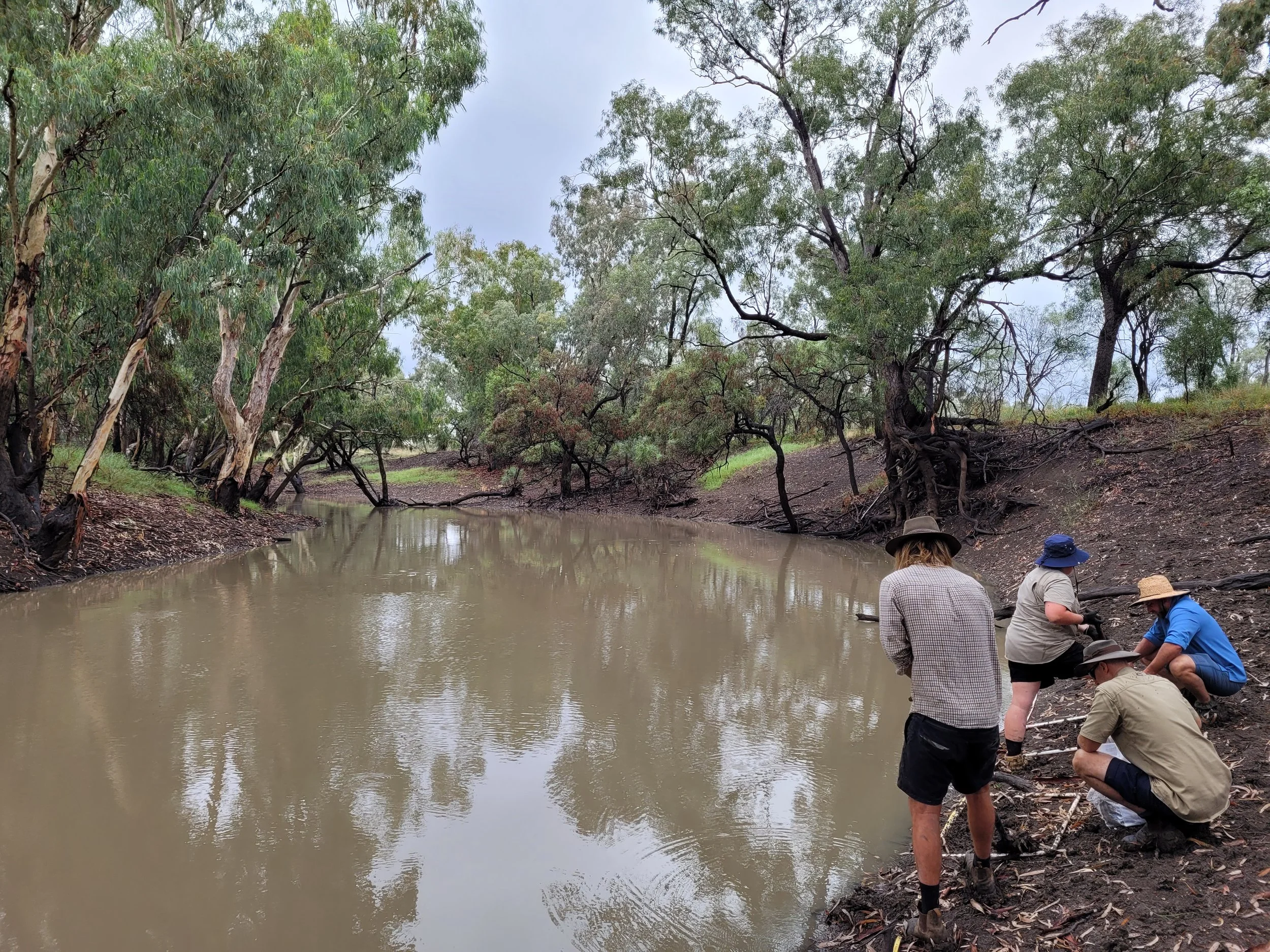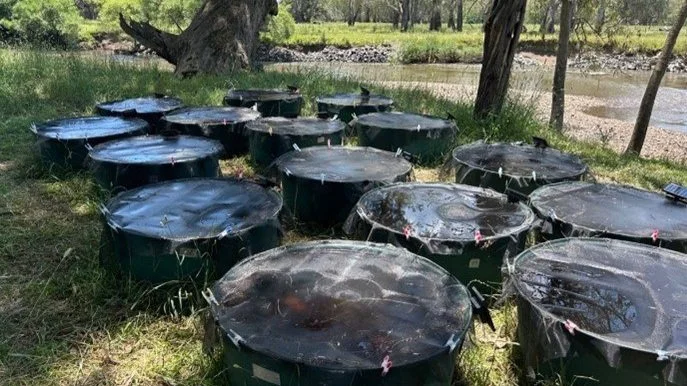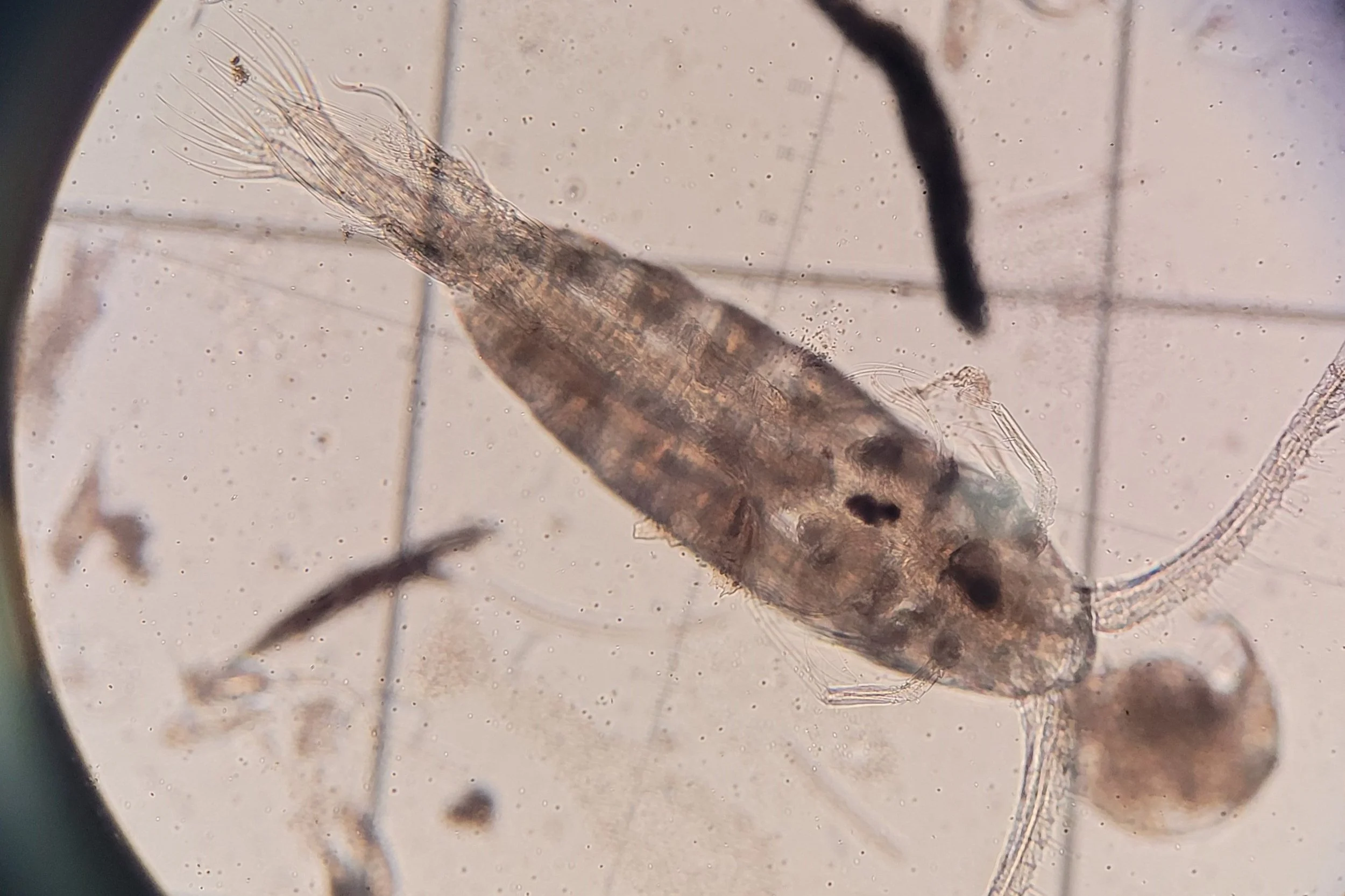Flows, floodplains and connectivity
Connecting rivers, banks, and floodplains is vital for healthy aquatic ecosystems. In the Murray-Darling Basin, river regulation and water extraction have reduced how often and how long floods occur. In NSW, environmental water is used to help restore natural flow patterns and support ecosystems. Key questions remain on how best to manage to water to enahnce environmental benefits.
Flows and floods help move water and nutrients across the landscape, supporting many ecological processes. When floodplains are covered with water, they become active zones where organic matter from plants and soil is broken down. This provides food for microbes and small animals like freshwater shrimp and Bony Bream. Floodplains can both release and absorb nutrients, depending on conditions.
Flows also change habitats and resources, leading to quick shifts in microbial activity, algae and plant growth. Flows can trigger the hatching of tiny animals like copepods and rotifers from eggs in the sediment. Inundation of bank and floodplain environments can support the growth and recruitment of invertebrates, fish and birds.
We’ve been working with colleagues in the NSW state government and CSIRO to help better understand how inundating different river bank heights (Hitchcock et al. 2025) and different floodplain habitat types can lead to different outcomes for food webs and ecosystem productivity.





